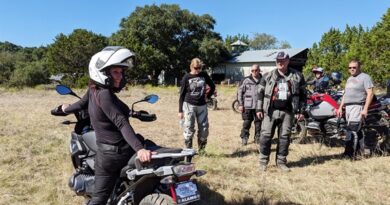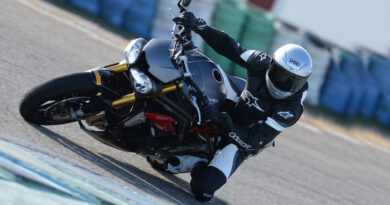ATGATT: Neck brace or not?
In a few of my stories published in BMW Owners News, I have mentioned speaking with former MOA President Reece Mullins at the 2022 MOA Getaway in Fontana. A conversation I haven’t mentioned was when we were having lunch and he told me about his new motorcycle. I asked what had happened with his old one, and he went on to explain he had an accident and the bike was toast. My first concern was that he was OK after the crash. His response was, “Well, I wear all my gear all the time, and I pray a lot.”
I am a big advocate of “All The Gear All The Time” or ATGATT. It doesn’t matter if it is a hot summer day and I am only going down to the corner store for a soda–ATGATT. Not wearing gear to me is just madness. Whenever I ride past someone or they pass me and I notice their ankles above their shoes and below their pant legs, I cringe, thinking about ankle burns and road rash. Ugh, I am cringing now just writing about it. I just don’t understand what goes through some peoples’ heads. Even short riding boots scare me. But this brings me to a good point–though many of us are all about ATGATT, many of us have different perspectives of what that actually means.
The general consensus is that ATGATT includes boots, armored pants, jacket made of friction resistance materials, gloves and a helmet. For me there are a few additions. I always wear tall boots due to the fact I am scared of busting an ankle and the extra support always makes me feel more confident, and I wear a neck brace. All these items combined equate to ATGATT to me.
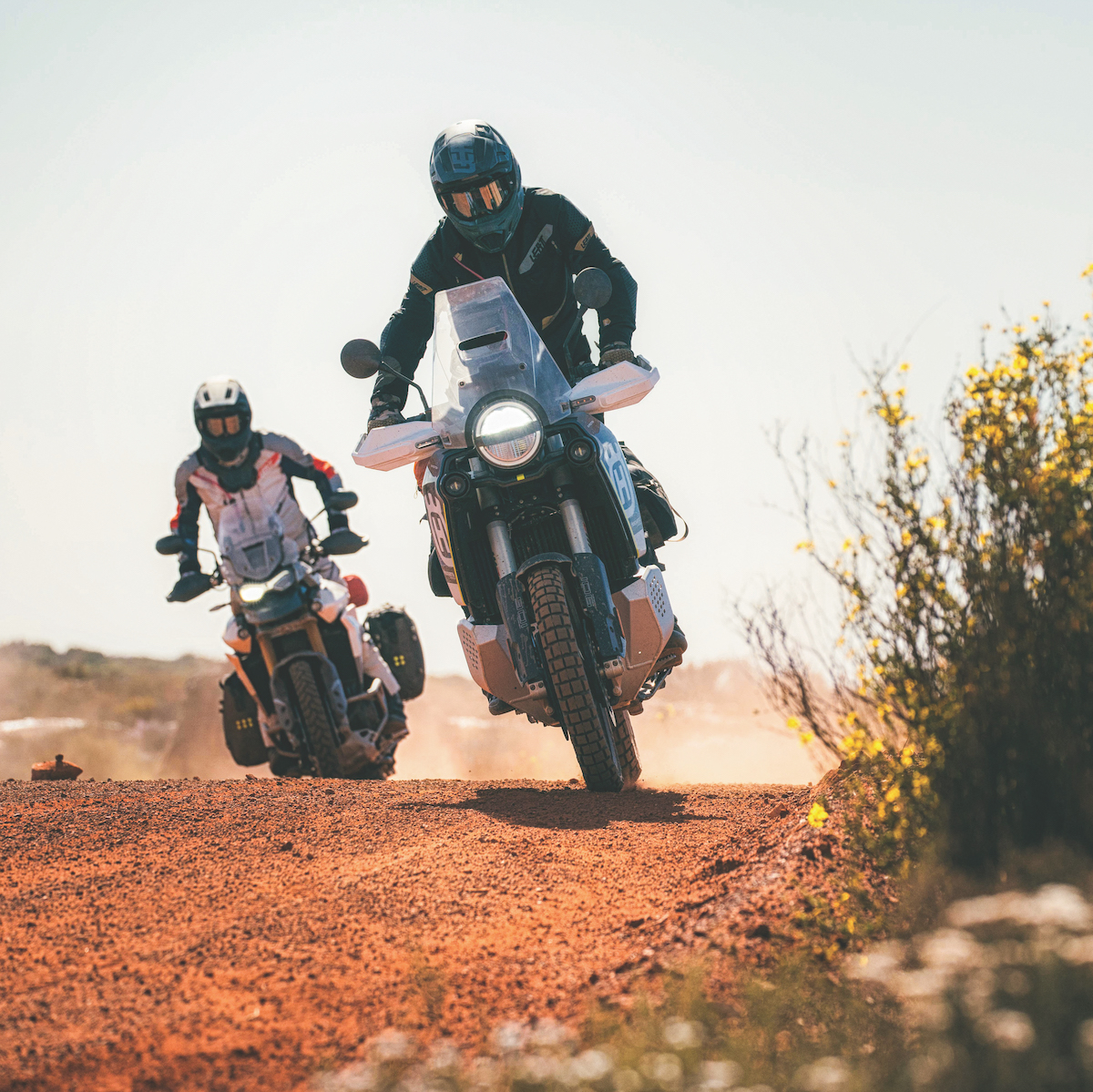 When it comes to riding, Janel is the same way. We both try to influence our friends in this regard as well. We regularly give a hard time to our friends who ride with anything less than the general idea of ATGATT.
When it comes to riding, Janel is the same way. We both try to influence our friends in this regard as well. We regularly give a hard time to our friends who ride with anything less than the general idea of ATGATT.
Recently, my close friend who used to ride motorcycles came to visit us on the Sunshine Coast of British Columbia. We have some amazing off-road riding here, so I asked if he wanted to go for a ride on Janel’s bike. He was excited and asked about what gear he should wear. He is about the same size as Janel and fit into all her gear. Once he was all wrapped up in the standard ATGATT, I handed him Janel’s neck brace. He asked what it was, and I went on to explain how neck braces work to prevent hyperextension of your neck and can prevent some very serious injuries. He did look a little skeptical but he knew I wore one, so he just put it on.
My friend didn’t have much experience riding off-road so I grabbed some pylons and we headed to a parking lot for some training. After weaving through the pylons for an hour, he looked comfortable standing up on Janel’s motorcycle, and after a few more passes, we headed into the mountains.
My friend is normally a very cautious person, but he was really moving on the back roads, making tight turns, avoiding large holes and even having little to no issues in loose gravel. We got about halfway up one of the mountains when I noticed he had a nail in his rear tire. I checked it over and suggested we get back home quickly as the tire was losing air rapidly and we didn’t have a spare tube with us. About 10 km (6 miles) from my house, we crossed a bridge over a small fast running creek, and I noticed he took the turn really wide. This registered in my mind as fatigue.
He was getting tired, and his reactions were slowing. I started to slow down a bit hoping to make him ease off and relax. After the next corner I looked back and realized he was gone. I turned my bike around hoping to find him sitting on the side of the road, but after going all the way back to the bridge I couldn’t find him. Panic began to set in: Was he OK? Where on earth was he? Am I finally going to use my In-Reach? His wife is going to murder me! I quickly turned the bike around and on my second trip back I saw a tire trail going off into the bushes and off an embankment. As I was jumping off the bike thinking I had just killed my friend, he came up out of the bushes without a scratch on him that I could see.
“Are you all right?” I asked.
“Yeah, I am fine, the bike is down that embankment though, man. I am so sorry.” He responded in a voice that was shaky with adrenaline.
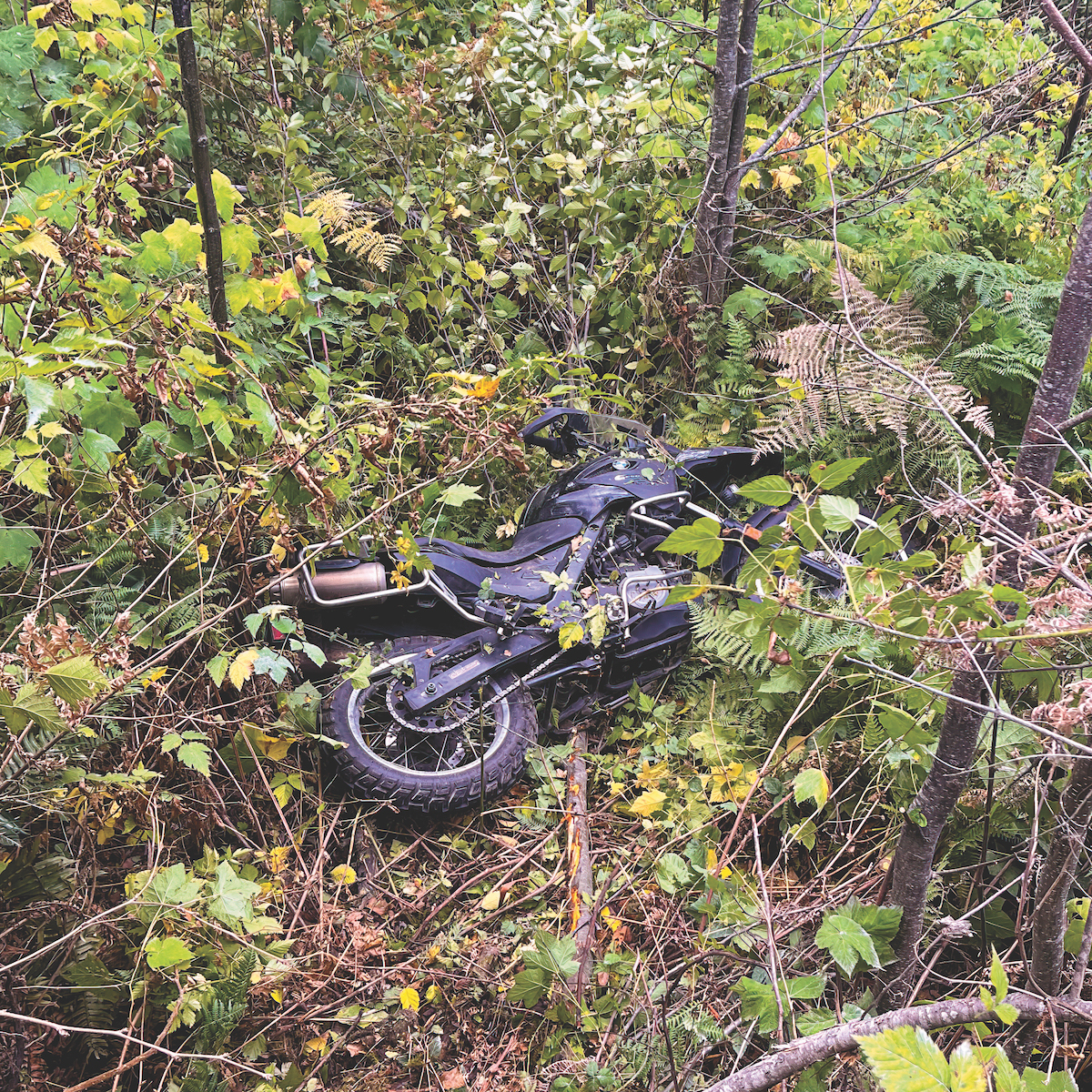
“Who cares about the bike?” I said. “I can always fix the bike, I can’t fix my friend.”
He then showed me where the bike was, and I couldn’t believe he was OK. The bike had gone off the edge of the dirt road, launched over a downed tree, then fell about seven feet down where it took out another small tree and was lying on its side.
“Wow!” I exclaimed. “When you crash, you really crash.”
We both laughed at that, all while I wondered how the heck he wasn’t hurt. Then of course, we snapped a picture. Don’t judge me! I am a photographer!
With the help of some good-hearted campers, after about two hours we were able to get the bike back up the embankment. We then unsteadily rode back to my house. After a severe verbal beating from both our wives, we took a look at the damage and we were able to get the bike back to running condition with a new front axle, front stabilizer, clutch lever, triple tree and rear tube.
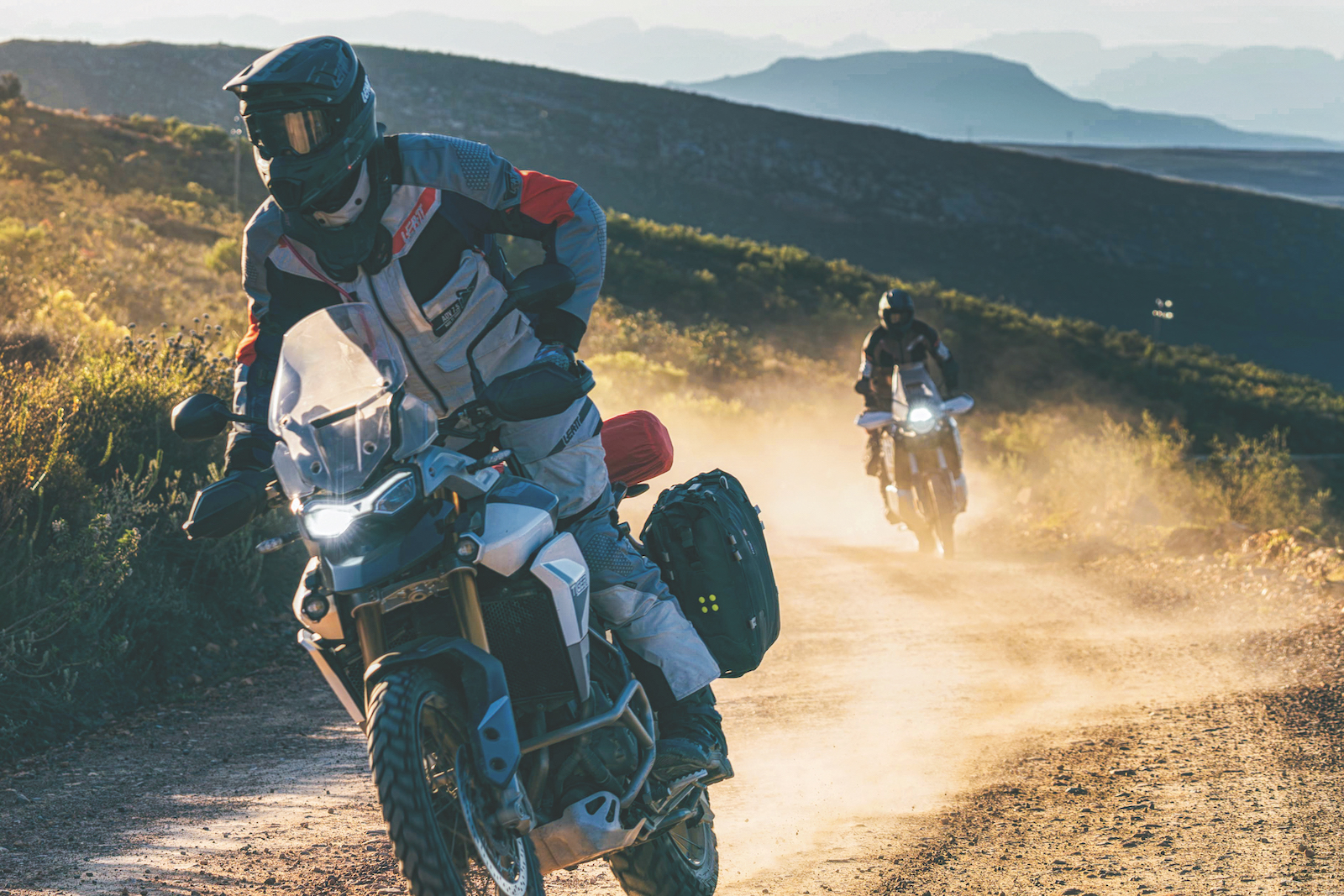
My friend seemed fine. He hadn’t complained about any pain, and he didn’t seem to have any difficultly lifting the bike up the embankment earlier. Now that the adrenaline had ceased, I asked if he was really OK. He was honest and said, “I am pretty sure the bike rolled over me. My neck is a bit stiff and my legs are sore, but I am OK.”
As a former paramedic, I decided I should take a look at his neck to determine if we should head to the hospital just in case. I didn’t notice much, but his explanation of where his neck hurt did suggest a slight hyperextension. This likely did some damage to his ligaments. I looked at him very serious and told him, “That neck brace may have saved you from a broken neck.”
If his neck was sore from the mild amount of hyperextension that was allowed with the brace on, I can’t imagine what would have happened if he didn’t have the neck brace on–well, I can, and it’s not good.
This leads me to the on-going debate about neck braces: to neck brace or not to neck brace, that is the question. Heated debates stemming from social media, personal experiences and just plain argumentative people have put a shadow over the neck brace’s functionality. Like many new means of safety there is often a minority group’s voice that is loudest and more often taken for fact. Thinking back to the time when seat belts were made mandatory, people weren’t resilient, but they did wonder if they were helpful.
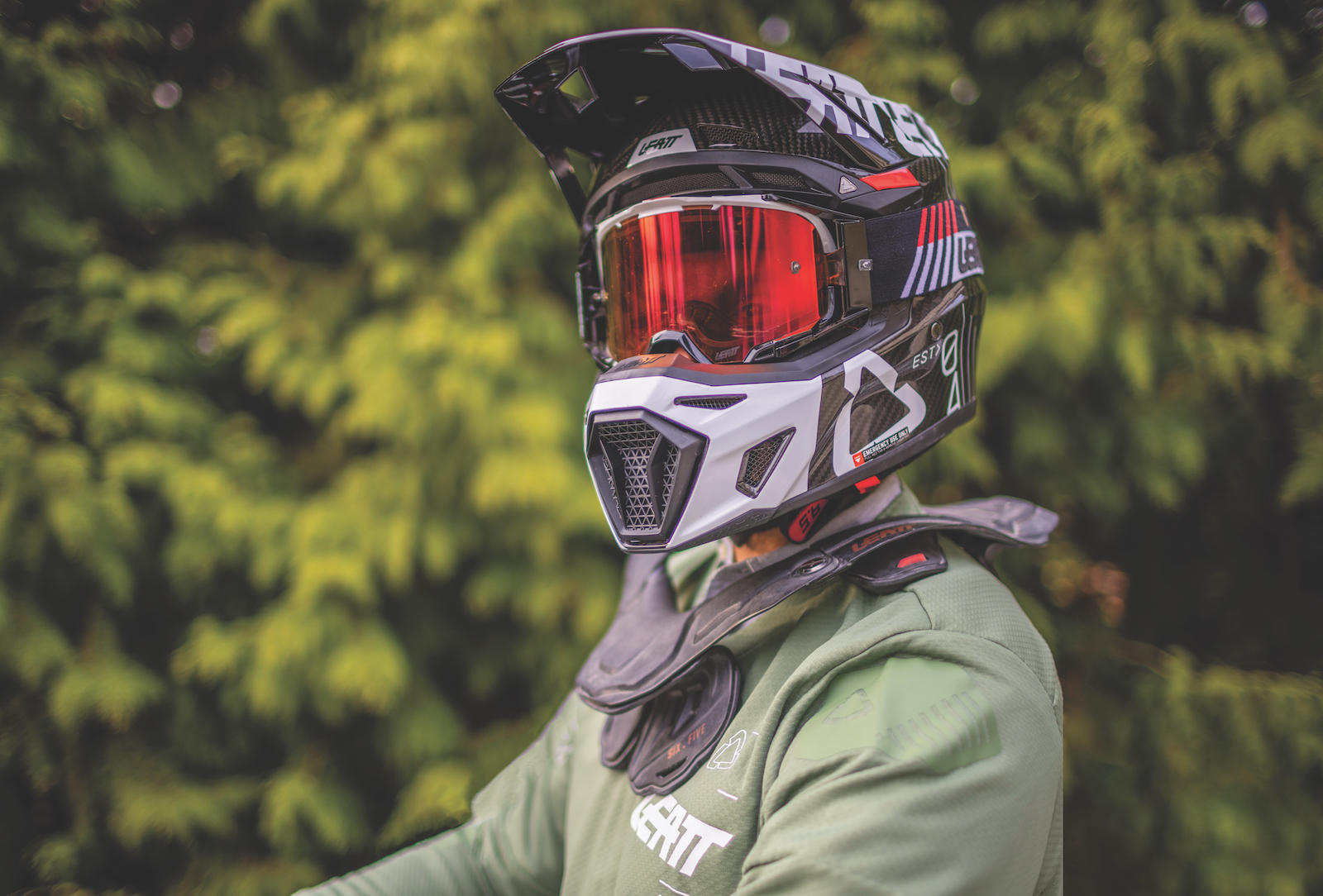
During my childhood in the 80s, I remember plenty of adults not wearing seatbelts; now, however, I can’t remember the last time I got in the car with someone, and they didn’t put one on. Is this the direction we are headed in with neck braces? Let’s review some of the comments riders make about neck braces and then some of the data that has been researched.
The most common comments from riders against neck braces are:
- A neck brace will break your collarbone if you crash
- They will break your upper back, causing nerve damage and/or paralysis
- They are uncomfortable
- They restrict movement
- They look stupid
- None of them fit right
Let’s address these one at a time:
1. A neck brace will break your collarbone. Current neck braces on the market spread the impact below your collarbone on your chest and along your back. Some, such as those made by Leatt, have a collarbone cut-out thus avoiding the collarbone all together.
2. They will break your upper back causing nerve damage. The amount of force required to break your back is far more than what your helmeted head snapping back can create.
3. They are uncomfortable. I don’t even notice mine is on; I worry more about my butt going to sleep.
4. They restrict movement. Yes, that is their job. However, neck braces do not restrict rotational movement, so you can still have a full range of vision.
5. They are stupid looking. I don’t notice when people are wearing neck braces, but if you are more concerned about how you look than your safety, then ATGATT might not be in your wheelhouse.
6. None of them fit right. Previous iterations of neck braces did not have much adaptability, however; more recent models have several settings to make sure they fit riders in a comfortable way.
As you can see, all of the comments above have answers, and you may think I am a bit biased since I wear one. I completely understand that. So now, let’s dig into to some of the research out there.
One study examined motorcycle accidents from 2009 until 2018 in five U.S. states. Examining the data, they found that cervical spinal injury was 89% more likely without a neck brace. They also found that a noncritical cervical spine injury was 75% more likely without a neck brace. These percentages support wearing a neck brace, but to be on the side of skeptics, we don’t know the types of crashes each person was in.
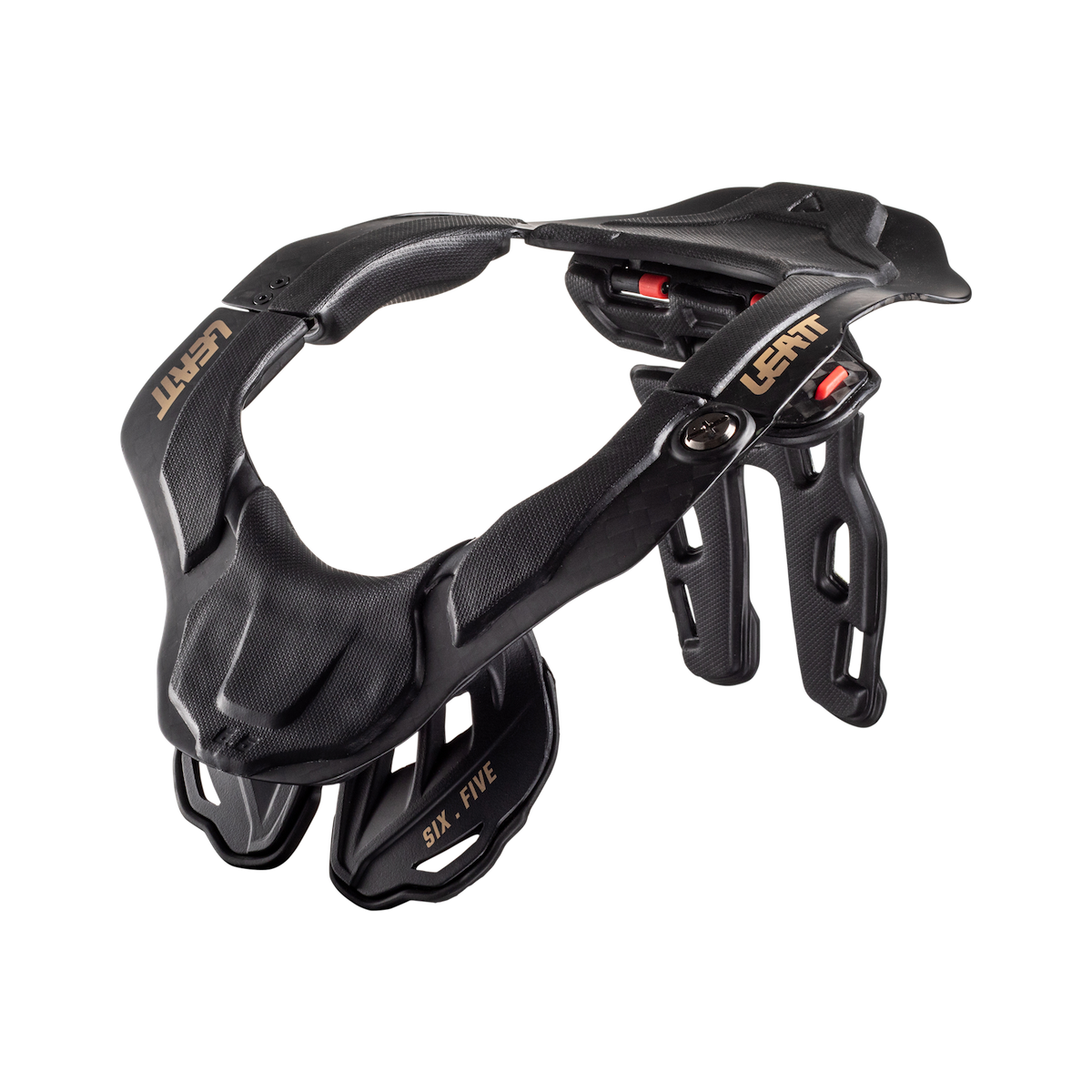
Are people who wear neck braces more likely to drive slower, thus ending up in fewer high-speed crashes? Do neck brace wearers crash more often off-road than on, avoiding collisions with other vehicles? These are of course questions that could be answered if we looked further into the data which we don’t have access to, but just taking the data at face value, so far it points at a positive correlation to using a neck brace.
One point the researchers found which is interesting is that when not wearing a neck brace, motorcyclists were 45% more likely to break a collarbone in a crash. This data refutes the above claim that a neck brace leads to a higher likelihood of collarbone break. Finally, the study concluded that a cervical spine injury of any kind was 82% more likely when not wearing a neck brace.
All of the above data supports wearing a neck brace when riding a motorcycle. There are other studies out there as well. Several peer-reviewed studies agree that neck braces for any two wheeled sports (cycling, motorcycling, etc.) only protect from hyperflexion and hyperextension (forward and backwards neck movement). There is limited protection from the tilting of the neck left or right. This might seem to be a disadvantage, and for the ultimate safety it is; however, the neck braces are designed mainly to prevent hyperflexion and hyperextension. Any type of lateral movement prevention is secondary since we need to be able to move our heads and necks while riding to be able to see oncoming traffic.
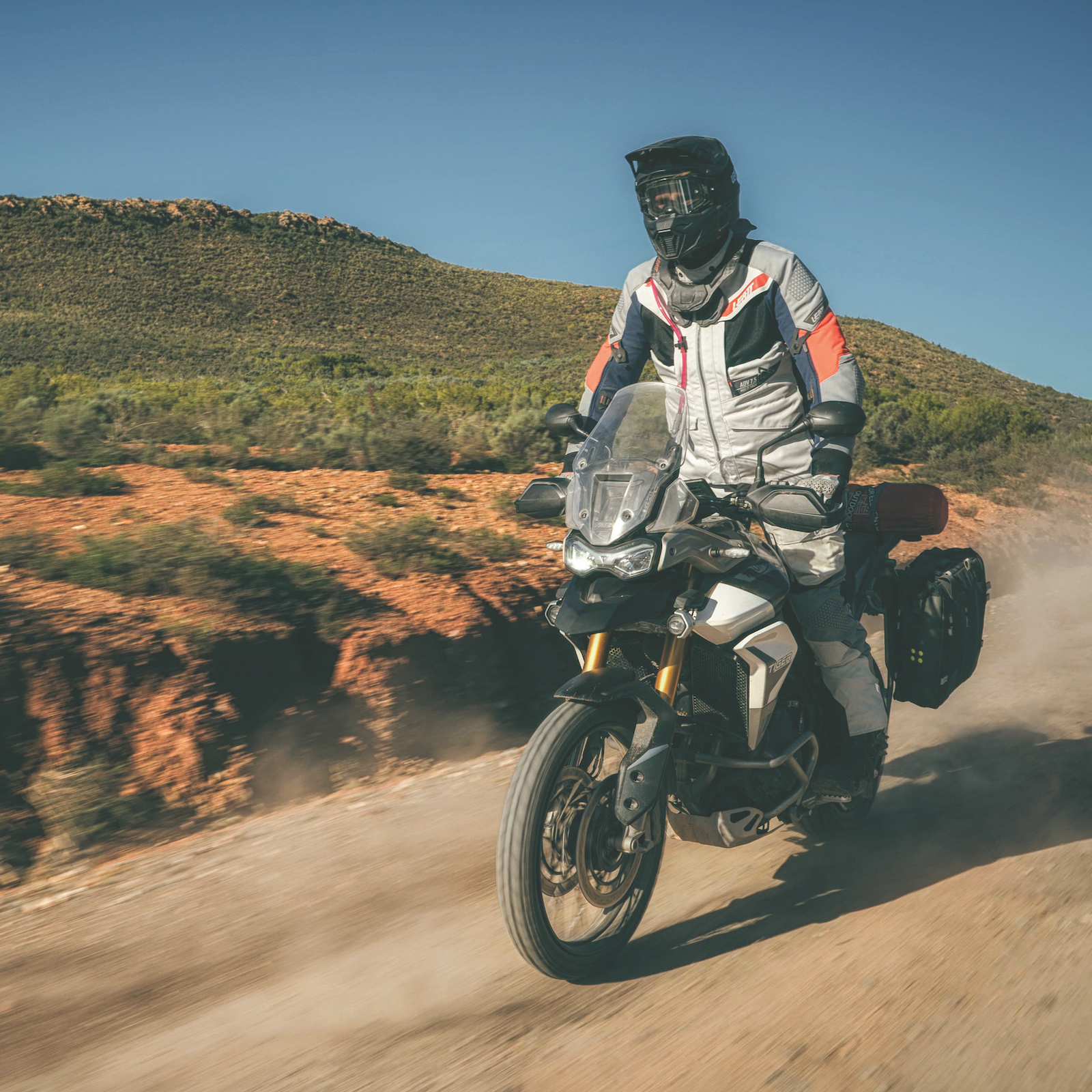
It is important to note that any gear is only used to prevent injury when things go wrong. The best option for an accident is just to not get into one. Take motorcycle training, be aware at all times when riding and know your route. When things do go wrong, make sure you are riding ATGATT. I know I am, and that includes a neck brace, even if some people might think I look dumb (I still don’t understand that comment). I know it saved my friend, and that is all the results I need to see.
Note: OK, that last statement made for a good ending, but as a research doctor I do have to stress I need more than one real life example to make an opinion on something. I have however reviewed a lot of data and see the logic in wearing a neck brace based on numerous studies.





